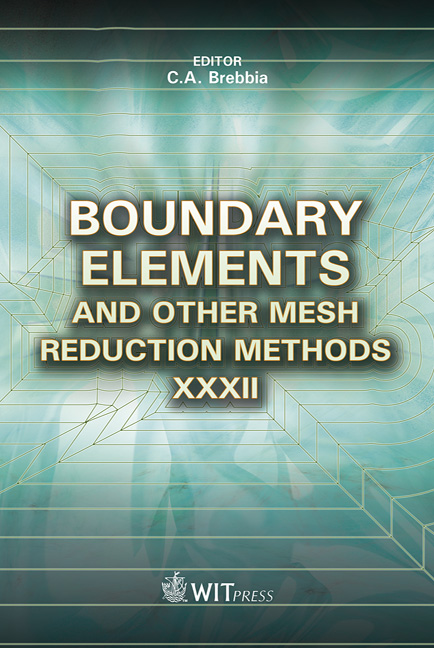The Boundary Element Method Revisited
Price
Free (open access)
Transaction
Volume
50
Pages
12
Page Range
227 - 238
Published
2010
Size
445 kb
Paper DOI
10.2495/BE100201
Copyright
WIT Press
Author(s)
N. A. Dumont
Abstract
The collocation boundary element method is derived on the basis of the weighted-residuals statement. Only the static case is addressed, as it already involves all relevant conceptual issues. The present outline brings to discussion some relevant aspects and implementation issues of the method that should belong in any text book. It is shown that, if the boundary element method is consistently formulated, an inherent error term – related to arbitrary rigid-body displacements – is naturally taken into account and has no influence on the resultant matrix equation, with traction force parameters that are always in balance independently of mesh discretization. The constitutive matrices of the method – the single-layer and double-layer potential matrices G and H – present some spectral properties that are per se interesting but that also have applicability consequences. The matrix G is rectangular, if consistently obtained. For and adequately formulated problem, the solution of the resultant matrix equation is always possible (and unique) whether directly or approximated in terms of equivalent nodal forces. The effects of body forces, whenever transformable to boundary actions, may be expressed in terms of the boundary interpolation functions, which renders the final matrix equation more elegant and speeds up calculations in no detriment to accuracy. There is a novel proposition for the interpolation of traction forces along curved boundaries, with results that may be only slightly improved, as compared to the classical procedure, but that simplifies numerical computation and adds to the consistency of the method in terms of patch test assessments. The conceptual and numerical developments are illustrated by means of a few examples. Keywords: boundary elements, weighted-residual methods, generalized inverses.
Keywords
boundary elements, weighted-residual methods, generalized inverses





